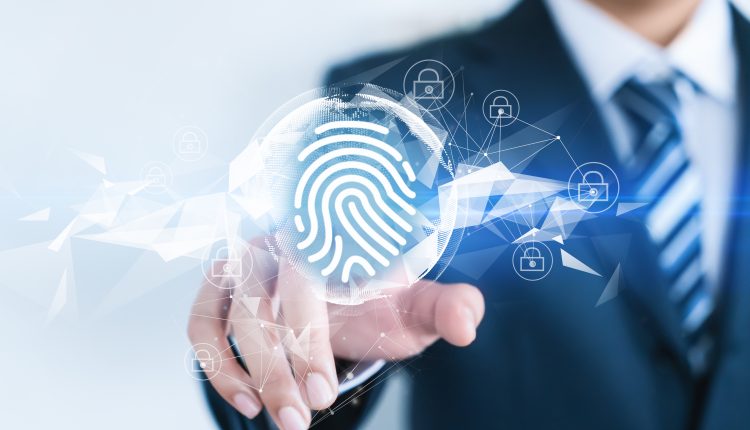The role of Identity and Access Management in security
Esteban Hernandez, Specialist Solutions Architect, Security, Amazon Web Services (AWS), says, managing who has access to data is vital to mitigating risk, minimising human error, and protecting the network from threats

This is a challenging time for many businesses. Over the past year, priorities have shifted. Plans for the future have changed, and some companies are under pressure to remain afloat and protect the employees still working within their business. One of the biggest changes for many organizations was the switch to remote working. While some industries can thrive working outside the traditional office, it poses many challenges for others. The most significant being managing who has access to company data.
Security teams can feel as though they have little insight into who is accessing what. This is caused by not having the right tools in place, and employees working remotely. According to Gartner, with 95% of CIOs expecting a greater need for cybersecurity controls, businesses must put in place measures that will protect their most valuable asset: their data.

Identity and Access Management
This is where AWS Identity and Access Management (IAM) plays an important role. Businesses need to know who is on their network at any given time, has access to data the organisation produces, and be able to verify who they are. Knowing and restricting who has access to data is vital to mitigating risk, minimising the impact of human error, and protecting the network from internal and external threats.
IAM is one of the most critical components to having a safe cloud infrastructure. As businesses look to monitor and verify all access permissions for both their on-premises and cloud environments. The key to securing new users and services in AWS is understanding IAM. IAM enables organisations to control who is authenticated (signed in) and authorised (has permissions) to use resources. This means security teams have a complete view of who is trying to join their corporate network and view the data passing through it. As a result, they can verify every employee, understand the permissions granted to them, and ensure no one unverified bypasses security protocols.
Authentication — verifying who you are
Authentication is the first step in IAM — it is the process of validating that users are who they claim to be. It enables IT and security teams to manage access to services and resources securely. Using IAM, companies can create and manage users and groups and use pre-set authorizations to allow or deny their access to resources.
This means every employee within an organization, regardless of their job title, can access specific parts of the corporate network or AWS resources. This is just one of many processes security teams can implement to help ensure that company data remains secure. Organisations can enhance the authentication process by leveraging IAM to implement complex password policies, password expiry, and add additional layers including Multi-Factor Authentication (MFA).
Authorization — access permissions
Following authentication, the next step is authorization. During authorization, IAM technology uses values from the requested content to check for policies applicable to the request. It then uses the policies to determine whether to allow or deny the request. In AWS environments, for example, most policies are stored as JSON documents and specify the permissions for principal entities. There are several types of policies that can affect whether a request is authorized. To provide your users with permissions to access the AWS resources in their own account, for example, security teams need only identity-based policies.
Ultimately, authorisation is implemented by explicitly giving users/groups permissions to access specific resources or services. Having these permissions in place means that security teams automatically have a holistic view of every user trying to access data, and the automatic, policy-based, ability to deny access should they deem it necessary. In the broader context of network security, authorization allows security teams to verify everyone’s identity on the network, and whether they have permission to access the data they are seeking — while also automatically denying suspicious requests based on policy. It’s this granular level of insight that allows security teams to defend the network and stay ahead of the cybersecurity curve.
Layering security for enhanced performance
Organisations can also implement multi-factor authentication (MFA) as an additional security defence. MFA works alongside IAM, as an extra layer of protection on top of a simple username and password. With MFA enabled, when a user signs in to their cloud platform, they are prompted for their username and password (the first factor—what they know) and an authentication code from an MFA device (the second factor—what they have).
Organisations must also make sure they have full control over what users are able to access, even when dealing with multiple accounts per employee. That’s when a Single Sign-On (SSO) solution becomes handy. AWS SSO integrates with AWS Organizations and offers view of permissions of Customers’ accounts and associated permissions. AWS SSO also gives you the ability to integrate with 3rd party Identity providers (e.g. Okta, AzureAD and others) to be able to leverage a single identity across AWS and on-premises environments. For users, it provides easy access to all their assigned accounts and applications from one place, no matter how many layers of, or how complex, security infrastructures are within the organisation. For the security teams, AWS Single Sign-On (SSO) allows customers to manage access and user permissions to all accounts centrally. This means the system maintains all the necessary permissions automatically, saving time spent setting up each individual account.
The shift in the workforce catalysed by the pandemic is adding pressure to security teams, however, they shouldn’t have to feel like they are under strain. With this level of insight and management over user access and data, security teams will have the tools and resources they need to better maintain and protect their business.
The business benefits
When employees are working from home, as many have throughout the pandemic, IAM allows security teams to maintain control over who has access to data. This powerful technology, in conjunction with MFA and SSO, means businesses can verify the identities, and rights of those users, to access every piece of data.
For an organisation to maintain control, IAM must be part of an organization’s full security suite, especially as remote working looks set to continue for months to come and become embedded in modern day working culture. By introducing an IAM model and being strict with the rights and access to assets, businesses can maintain control over their network and protect their company against internal and external security challenges. Security has to be baked in from the ground up, and with IAM, it can be.





